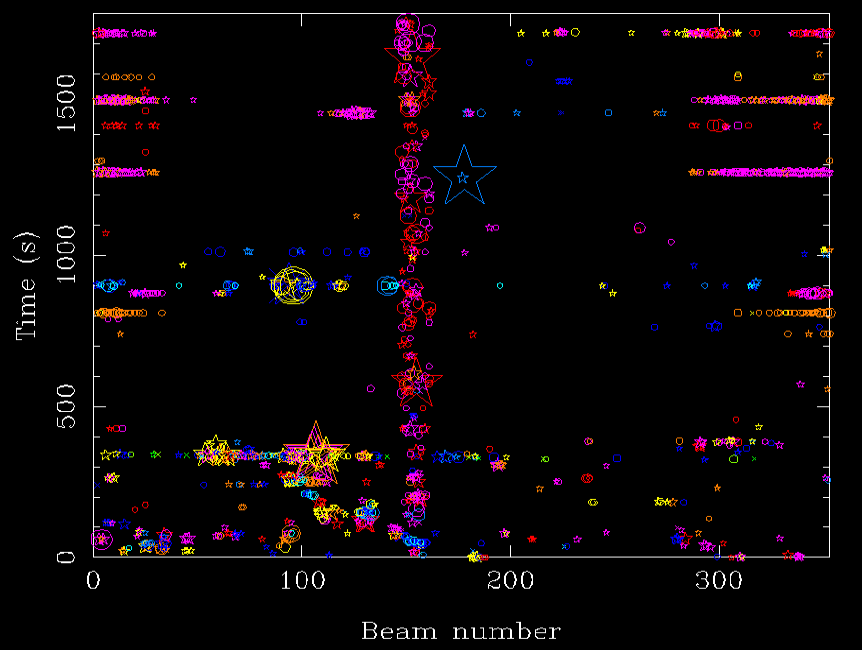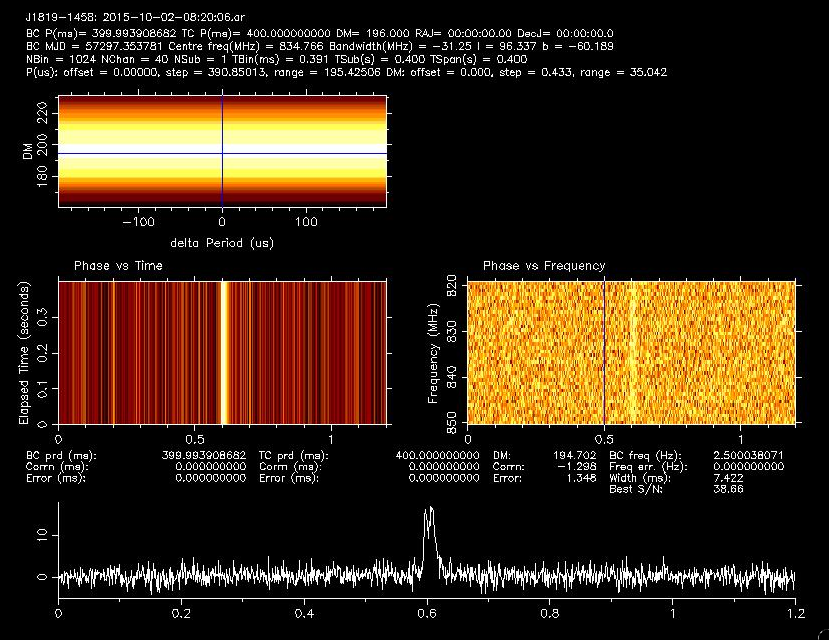The UTMOST project aims to find a new type of radio emission source — Fast Radio Bursts — discovered in the last few years and primarily seen at the Parkes Radio Telescope. UTMOST has a field of view much larger than any of the telescopes which have seen FRBs to date, an important part of our strategy to increase the discovery rate of these enigmatic signals.
An important validator of our burst searching technology is to look at single, intermittent bursts of radiation, coming from so called RRATs. These are probably neutron stars which, when in their “on” state, emit a bright occasional pulse of radio waves.
UTMOST has now reached sufficient sensitivity in the commissioning process that we can see pulses from the brightest RRAT, J1819-1458. Three pulses were found in an hour’s observing in early October 2015 — very satisfyingly, as we had been searching for pulses from this source over many months.
Plot of the search position on the sky (“beam number”) versus time, for isolated bursts of radiation seen during a 30 minute observation with UTMOST in early October 2015. The symbols show the time and sky location of brief radiation bursts, with symbol type and size indicating parameters of the detection, such as their duration and brightness. The large blue 5-pointed in the upper-middle region of the plot is a burst from the RRAT J1819-1458.
Plot of a single (double-peaked) burst of radiation from the RRAT J1819-1458. The pulse is seen as a function of time (lower plot, on a scale of seconds), and observing frequency (middle-right panel). The other panels show some of the fitted parameters of the burst in our automated detection system.
Image credits: Manisha Caleb, Andrew Jameson and Chris Flynn

